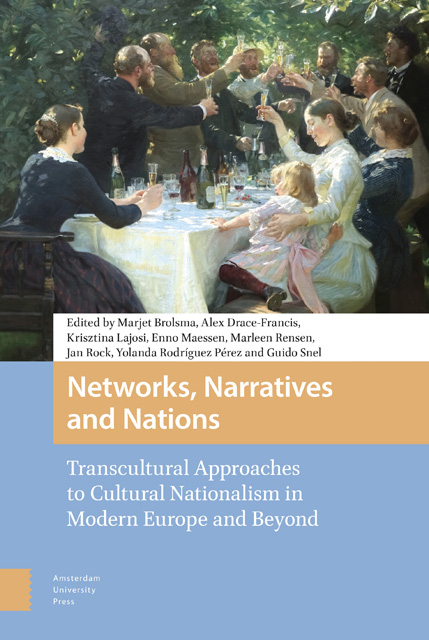 Networks, Narratives and Nations
Networks, Narratives and Nations Book contents
22 - Auto-exoticism and the Irish Colonial Landscape: George Petrie’s Paintings of Clonmacnoise (1828) and Dún Aengus (1827)
Published online by Cambridge University Press: 16 November 2022
Summary
Abstract
This chapter shows how auto-exoticism, seen by Leerssen as a feature of the post-Union Irish novel, also shaped Irish landscape art in this period. The focus is on two key watercolours by George Petrie (1790–1866), together with engravings he produced for tourist guides.
Keywords auto-exoticism; George Petrie; Clonmacnoise; Inismore; Dún Aengu
In Remembrance and Imagination, his seminal study of “Historical and Literary Representations of Ireland,” Joep Leerssen identified “auto-exoticism” as a key feature of the Irish novel in the decades after the Act of Union (1800). Beginning with Lady Morgan, a succession of Irish writers, published in London, and with an English readership primarily in mind, developed this “mode of seeing, presenting and representing oneself in one's otherness,” that is, “non-Englishness.” They used the device of a cosmopolitan outsider, often on a journey westward from Dublin, to present a sympathetic image of the Irish poor. Designed, primarily, to counter the negative stereotypes held by English readers, this image exaggerated and romanticized Irish difference. In this way, “Ireland is made exotic by the self-same descriptions that purport to represent or explain Ireland.” Furthermore, in a paradoxical trope still present in contemporary tourism promotion, “the most peripheral areas of Ireland are canonized as the most representative and characteristic ones.”
My contribution attempts to demonstrate how auto-exoticism also shaped Irish landscape art in this period, noting, in addition, the colonial context of this mindset – something that was also true of the novels. Despite the constitutional fiction that after 1800, Ireland was a free and equal “Kingdom” in the expanded “United Kingdom of Great Britain and Ireland,” in real terms, whether of power relations, of ideologies or the shorthand of national stereotypes, Ireland remained a colony, though now, uniquely, an internal one. One reflection of this is that the exotic stereotype developed by Ireland's defenders in print or paint had many elements in common with the colonialist stereotype they sought to challenge. The focus here is on two key watercolours by George Petrie (1790–1866), together with the engravings he produced for the elaborate tourist guides that, like the novels, catered for a new English interest in Ireland post-Union.
- Type
- Chapter
- Information
- Networks, Narratives and NationsTranscultural Approaches to Cultural Nationalism in Modern Europe and Beyond, pp. 275 - 284Publisher: Amsterdam University PressPrint publication year: 2022


